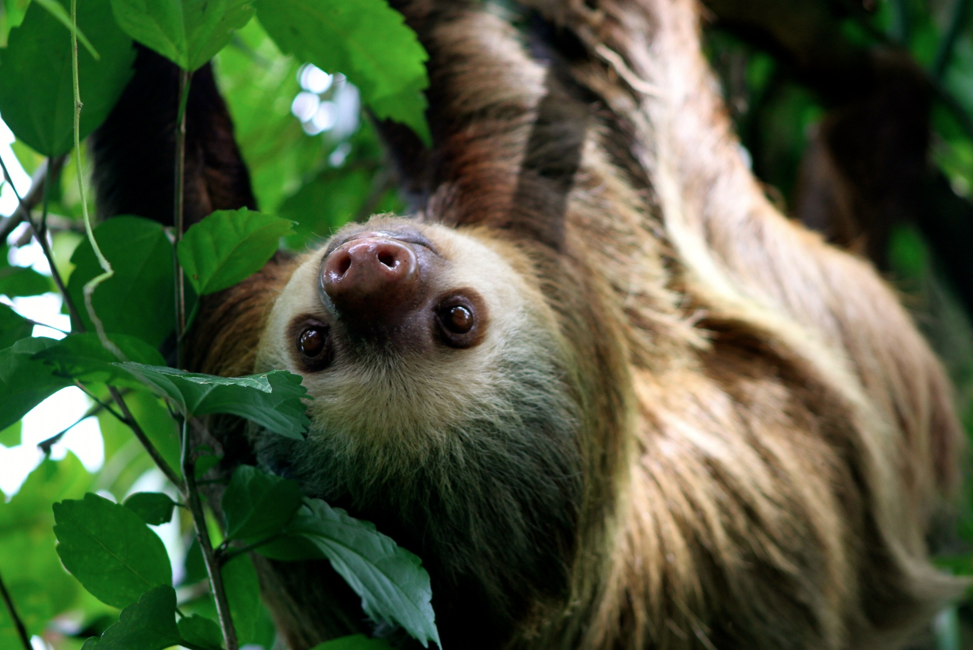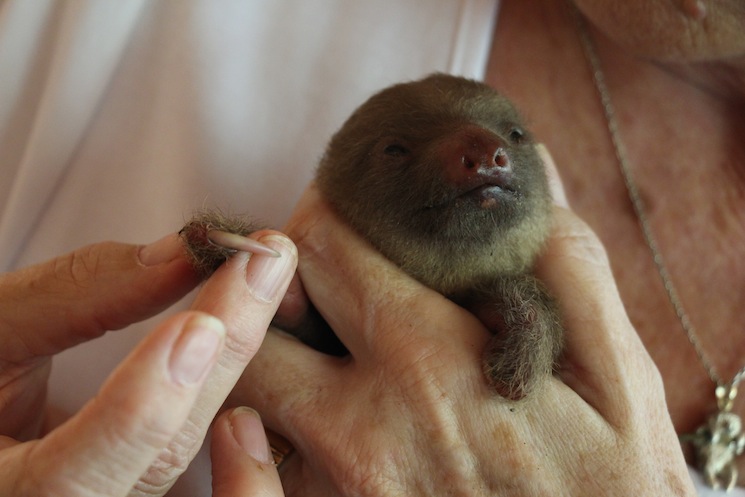Ever wondered what those gorgeous dark eyes are seeing when a sloth looks out onto the world? Humans are generally trichromats; our retinas possess three types of photoreceptors for recognising colour (“cone” cells), each of which has a different absorption spectra.
Xenarthrans (sloths, armadillos and anteaters) however, are rod monochromats. This condition in humans results in colourblindness, low vision in dim light, and almost complete blindness in bright light.
A new study, published in The Royal Society Proceedings journal, used many different genetic methods to conclusively show that the Hoffmann’s two-toed sloth is a monochromat. Furthermore, they concluded that these sloths have a long history of monochromacy. Based on fossil records, this may be a result of a historically subterranean lifestyle (ground-dwelling), that preceded the arboreal lifestyle (tree-dwelling) they live today, and hence restricted their evolution due to the dim light conditions.
“We searched the genome of…Choloepus hoffmanni (Hoffmann’s two-toed sloth)…for retinal photoreceptor genes and examined them for inactivating mutations. We hypothesize that rod monochromacy…evolved as an adaptation to a subterranean habitat in the early history of Xenarthra. The presence of rod monochromacy has major implications for understanding xenarthran behavioural ecology and evolution.”
So when you look into a sloth’s eyes, what do they see when they look back at you? If it’s day time, probably a light grey, blurry figure. But let’s just pretend otherwise, shall we?

